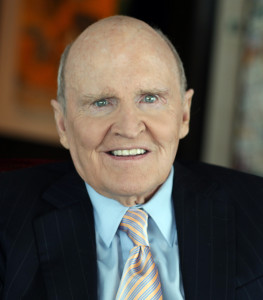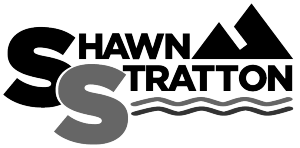 The fundamental role of leaders is to set their team up for success. For any leader to be successful, the team needs to be successful first. The famous former CEO of General Electric, Jack Welch had tremendous success because his business team was successful. The NBA basketball coach Phil Jackson achieved extraordinary success because of how his teams performed. You may think “that’s because they had some all stars on their team” but most teams have a few all-stars and that far from guarantees success.
The fundamental role of leaders is to set their team up for success. For any leader to be successful, the team needs to be successful first. The famous former CEO of General Electric, Jack Welch had tremendous success because his business team was successful. The NBA basketball coach Phil Jackson achieved extraordinary success because of how his teams performed. You may think “that’s because they had some all stars on their team” but most teams have a few all-stars and that far from guarantees success.
Setting up a new team for success means you need to put the work in early and often so you can watch them blossom later on. The first week on an expedition with a new team was always the busiest. Not only did the team need a lot of direction and instruction from their leaders, but also they needed clear expectations and established norms to work within.
An essential part of a leader’s role is establishing expectation and guiding the development of norms within the group. Without a conscious effort to deliver these early and often in the begining stages of a team’s development, you are doing a disservice to the team and are not setting them up for success. You are the leader, the role model, and they are watching your every move.
If you show up late to meetings, they will start coming late. If swearing is part of your vocabulary, they will start swearing more often. If you send emails on the weekend, they will expect they need to work on the weekends. If you don’t address inappropriate behavior, they will start losing faith in the team and your leadership. When you have been together for a long time and have an established relationship, some of these items can slide from time to time but in the early stages of team development, it is critical they are not displayed or are addressed immediately.
A few great examples of early stage norm setting came a few weeks ago by two separate hockey teams in the NHL. In one case, the team was just starting training camp and one of their younger prospects, who was trying to make the team, slept in and was late for one of the first practices. If this kid had made the team, he would have been on his way to fulfilling a lifelong dream of making the NHL and achieving fame and fortune. Unfortunately for his coach and leader, this was not acceptable team behavior and they immediately sent him home from training camp to play with his junior team, many levels below the NHL.
 In a similar situation, in the first week of the 2015 NHL hockey season, Alex Ovecikin, the all-star and team captain or the Washington Capitals, also slept in and was late for a team practice. To send a message to Alex and especially the team, the coach decided to not allow him to play their next game. In a league where every point is critical and millions of dollars are on the line, keeping your best player out for one game is a big deal and sends a stern message to the team and every other team for that matter.
In a similar situation, in the first week of the 2015 NHL hockey season, Alex Ovecikin, the all-star and team captain or the Washington Capitals, also slept in and was late for a team practice. To send a message to Alex and especially the team, the coach decided to not allow him to play their next game. In a league where every point is critical and millions of dollars are on the line, keeping your best player out for one game is a big deal and sends a stern message to the team and every other team for that matter.
These are two clear-cut examples of a leader setting expectations and norms in the early stages of team development so their team is set up for success in the future. If you put the work in early on, you will usually be rewarded with a high functioning team down the road.
In the case of an expedition with the National Outdoor Leadership School (NOLS), these high functioning teams would be rewarded by spending their last few days doing Independent Small Group Travel (ISGT). This means if their leaders worked hard to set them up for success, by the end of the expedition the team would have the opportunity to split up into smaller groups and travel through the wilderness for several days without an instructor.
The NOLS curriculum structure goes a long way towards helping set students up for success but ultimately it’s the leaders who have to set the expectations, establish norms and role model every step of the way. Periodically dysfunctional NOLS groups do emerge and are not given the opportunity to go on an ISGT or a limited one.
This NOLS example is a classic display of putting your work in early so you can step back and reap the rewards of a successful team later.
5 steps to set your team up for success:
- Establish a Team Recipe Contract (download Team Recipe instructions)
- Diligently display the behavior you expect to see in your team (as they view you as the role model).
- Clearly lay out baseline expectations
- Share a clear purpose so they know the WHY in everything they do.
- Check-in early and often as a team and individually to show support and get an idea of how things are going for them.
Action: Take one action this week that will help set your team up for success and share it in the comments below.
Until next week… Embrace the Adventure!
Shawn
Shawn Stratton is an international leadership and team building consultant, professional speaker, bestselling author, Ironman competitor, and expedition guide.
Click here to learn more about how Shawn can help your organization.




